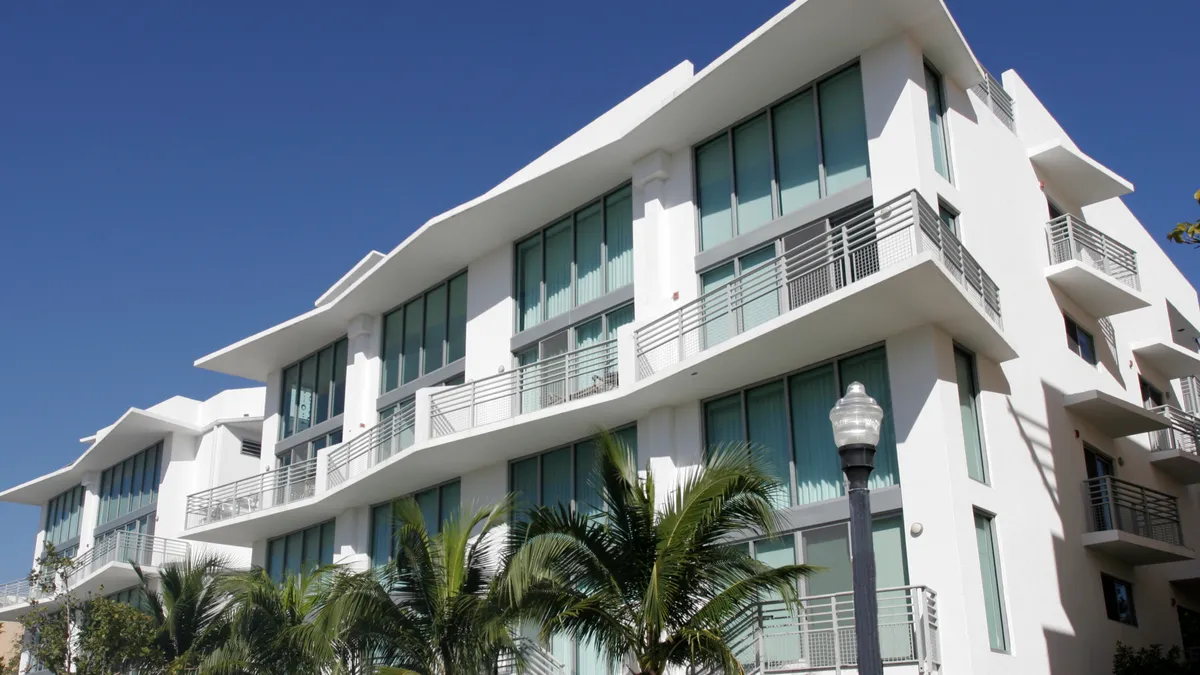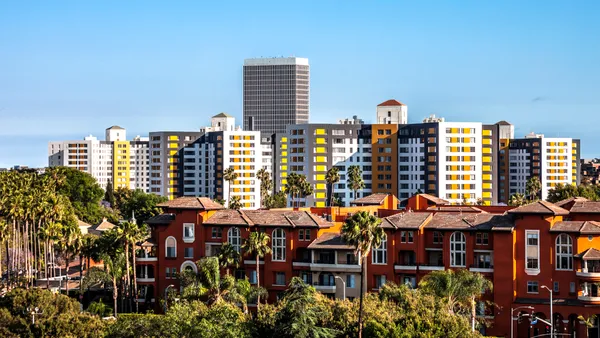Dive Brief:
- Following a drop in the national average rent last month, rents rose by $3 to $1,727 in October, according to the latest Matrix Multifamily National Report by Yardi Matrix. At the same time, year-over-year rent growth fell to 8.2% — the lowest level recorded since summer 2021.
- While every one of the top 30 metros in Yardi Matrix’s data set posted rent gains YOY, Yardi said that rent growth is still moderating. While some markets showed 20% YOY rent growth a few months ago, now only five are experiencing rent growth above 10%, led by Indianapolis at 11.8%.
- Weakening absorption is among the many drivers of diminishing rent growth. Occupancy rates at stabilized properties are negative YOY in 24 out of the top 30 metros. Phoenix and Las Vegas have experienced the steepest drops at -1.8% YOY each.
Dive Insight:
Overall, demand for multifamily units has fallen as a result of slowing job performance and concerns about the economic environment, according to Yardi. At the same time, the national lease renewal rate fell to to 60.2% in September, down from a peak of 68.0% in the spring — reflecting weak demand and low affordability.
Following 18 months of record-high prices and rent growth, rising interest rates, spurred by the Federal Reserve’s efforts to curb inflation, have dramatically changed the behavior patterns of the multifamily market. The Fed has pushed rates up between 6%-7% over the past several months, far above the 4.5% capitalization rate recorded in the spring.
On the investment side, higher debt costs and expectations of weak rent growth have had a negative effect on sales activity and property values. Investors are looking into alternate opportunities, including mezzanine capital and senior and construction loans, and many expect a recession in the near future, according to the report.
| Market | YOY rent growth, October 2022 | YOY rent growth, September 2022 | Difference |
|---|---|---|---|
| Indianapolis | 11.8% | 11.6% | 0.2 |
| Orlando, Florida | 11.6% | 13.3% | -1.7 |
| Miami | 11.4% | 14.3% | -2.3 |
| San Jose, California | 10.6% | 10.1% | -0.5 |
| Dallas | 10.5% | 11.9% | -1.4 |
| Kansas City, Missouri | 9.8% | 9.2% | 0.6 |
| Nashville, Tennessee | 9.7% | 13.2% | -3.5 |
| Charlotte, North Carolina | 9.4% | 10.4% | -1 |
| Raleigh, North Carolina | 9.3% | 10.8% | -1.5 |
| Boston | 9.0% | 9.9% | -0.9 |
| New York | 9.0% | 9.0% | 0 |
| Orange County, California | 9.0% | 11.3% | -2.3 |
SOURCE: Yardi Matrix
However, with mortgage rates rising, many would-be homebuyers have found themselves priced out of ownership and likely to continue to rent in the near future — or to move into the ever-growing single-family rental market. Despite moderating performance in the SFR market this month, with the national average rent for a single-family built-to-rent unit holding at $2,088 and a 1.3% decline in occupancy, Yardi anticipates a movement of would-be homebuyers into single-family rentals in the near future.











